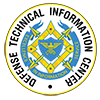Navy Pursues Advanced Drone Ship Mine-Hunting Tech
The Navy is continuing to move forward with development of the Unmanned Influence Sweep System (UISS) countermine technologies as part of its overall effort to create a fleet of unmanned vehicles capable of enhanced coordination while performing a wider range of technical operations. The Navy most recently affirmed its commitment to the UISS and the













